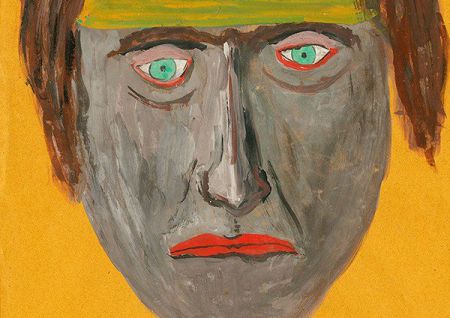HERMANN HESSE
Kunstmuseum Bern
Hodlerstrasse 8-12 - Bern
27/3/2012 - 12/8/2012
Hesse did not see himself as an author or painter and instead considered himself an artist. His comprehensive notions of art kept the dividing line between the various arts fluid. As a poet Hesse was long seen to be a controversial figure despite the fact that he was given the Nobel Prize for Literature in 1947. Also as a painter Hesse had to wait a long time before art criticism no longer ignored him.
The formative influence of his years in Bern
Hermann Hesse settled in Bern in 1912, exactly 100 years ago. There he felt strong ties to the many locations where he sought inspiration and stimulation, places like “Ougspurgergut” in Schosshalde, “Lohn” in Kehrsatz, and Bremgarten. Hesse’s years in Bern from 1912 to 1919 were not only decisive for his literary work. During this period in which he wrote his artist novel Rosshalde, he simultaneously began his little-known career as a painter that culminated in the 1920s and 1930s while living in Montagnola.
Between a harmonious existence and obsessive anxiety attacks
Painting played a pivotal role in Hesse’s life and work. Hesse despised everything mediocre, normal, and average. He suffered between feeling drawn to both a middle-class existence and self-realization as an artist his lifelong. Hesse's painting embodies the state of a harmonious existence that was not only unattainable for the artist in reality but also for the characters in his writings. As a painter he saw beauty, and found it everywhere. His watercolors show views of spacious landscapes with lakes, villages, hills and valleys. And for the very first time, this exhibition will be presenting his series of dream images to the general public. It comprises a series of very personal and intimate representations. He was encouraged to execute them while undergoing psychoanalysis in an attempt to try and come to terms with his disturbing visions in dreams. In contrast to his idyllic landscape representations, these pictures are deeply marked by obsessive anxiety and rampant eroticism.
A comprehensive retrospective
Many of the some 150 works will be shown to a larger audience for the first time. One of the focal points of the show is Hesse’s artistic activities in Bern. Additionally our visitors will be able to see many of Hesse’s illustrated poems, letters, and manuscripts. The key focus in the exhibition is, however, on Hesse’s visual language, which was inspired by Louis Moilliet, Cuno Amiet, and Albert Welti. This language is characterized by alienated subject matter; the use of invented, imaginary forms and unrealistic colors; a diversity of sometimes even very disparate styles; and repetition of compositional patterns. Starting with his very first attempts at painting, the exhibition allows us to see all the phases in the artist's creative development, his diverse subject matter, the genres he explored, and the styles of art he experimented with. His early studies are on show as well as large-format landscapes, paintings, detailed wash drawings, and illustrations for writings.
Kunstmuseum Bern
Hodlerstrasse 8-12 - Bern
27/3/2012 - 12/8/2012
Hesse did not see himself as an author or painter and instead considered himself an artist. His comprehensive notions of art kept the dividing line between the various arts fluid. As a poet Hesse was long seen to be a controversial figure despite the fact that he was given the Nobel Prize for Literature in 1947. Also as a painter Hesse had to wait a long time before art criticism no longer ignored him.
The formative influence of his years in Bern
Hermann Hesse settled in Bern in 1912, exactly 100 years ago. There he felt strong ties to the many locations where he sought inspiration and stimulation, places like “Ougspurgergut” in Schosshalde, “Lohn” in Kehrsatz, and Bremgarten. Hesse’s years in Bern from 1912 to 1919 were not only decisive for his literary work. During this period in which he wrote his artist novel Rosshalde, he simultaneously began his little-known career as a painter that culminated in the 1920s and 1930s while living in Montagnola.
Between a harmonious existence and obsessive anxiety attacks
Painting played a pivotal role in Hesse’s life and work. Hesse despised everything mediocre, normal, and average. He suffered between feeling drawn to both a middle-class existence and self-realization as an artist his lifelong. Hesse's painting embodies the state of a harmonious existence that was not only unattainable for the artist in reality but also for the characters in his writings. As a painter he saw beauty, and found it everywhere. His watercolors show views of spacious landscapes with lakes, villages, hills and valleys. And for the very first time, this exhibition will be presenting his series of dream images to the general public. It comprises a series of very personal and intimate representations. He was encouraged to execute them while undergoing psychoanalysis in an attempt to try and come to terms with his disturbing visions in dreams. In contrast to his idyllic landscape representations, these pictures are deeply marked by obsessive anxiety and rampant eroticism.
A comprehensive retrospective
Many of the some 150 works will be shown to a larger audience for the first time. One of the focal points of the show is Hesse’s artistic activities in Bern. Additionally our visitors will be able to see many of Hesse’s illustrated poems, letters, and manuscripts. The key focus in the exhibition is, however, on Hesse’s visual language, which was inspired by Louis Moilliet, Cuno Amiet, and Albert Welti. This language is characterized by alienated subject matter; the use of invented, imaginary forms and unrealistic colors; a diversity of sometimes even very disparate styles; and repetition of compositional patterns. Starting with his very first attempts at painting, the exhibition allows us to see all the phases in the artist's creative development, his diverse subject matter, the genres he explored, and the styles of art he experimented with. His early studies are on show as well as large-format landscapes, paintings, detailed wash drawings, and illustrations for writings.
